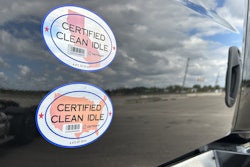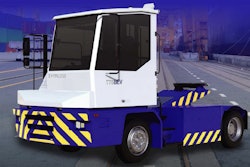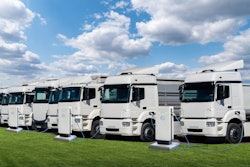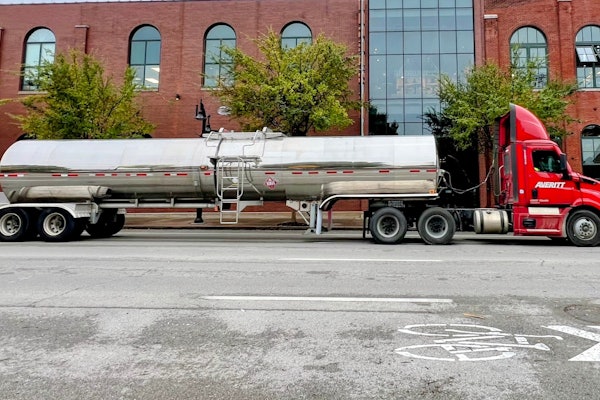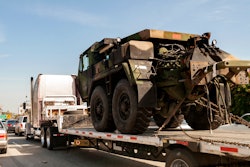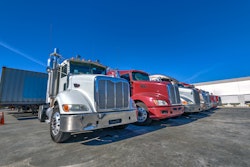It is clear that zero-emission transport is urgently needed to address the widespread air quality issues in many urban communities. This is especially true for diesel-powered heavy-duty vehicles (HDVs), which have proven to have an outsized impact on air pollution and public health. In California, for example, HDVs make up just 3% of vehicles on the road but are responsible for over 50% of nitrogen oxides and diesel particulate pollution.
This has major health implications for drivers and the communities with high volumes of heavy-duty truck traffic. A 2023 FMCSA study found that particulate levels inside truck cabs and sleeper berths — especially during idling — consistently exceed clean air standards, raising risks of asthma, lung cancer, heart disease, and premature death. And that’s just for the drivers behind the wheel. A 2025 CREA report estimates diesel truck emissions will lead to 307,000 premature deaths worldwide and more than $1.4 trillion in associated health costs by 2040.
There has never been more urgency to clean up trucking, but the method by which we do this continues to be debated. While Battery Electric Vehicles (BEV) have been quicker to market, there are some considerable challenges standing in the way.
Adoption in cars ≠ success in freight
Battery electric became the default zero-emission path largely because personal vehicles got there first. Light-duty EVs made early traction thanks to existing electric infrastructure, modest energy demands, and growing momentum in battery technology. The shift was accelerated by Tesla, which took a very different approach than any other EV manufacturer by reimagining how they were designed and built from the ground up. That success created a wave of confidence across the industry, leading many OEMs to assume that what worked for passenger cars would naturally scale to heavy-duty fleets.
But those assumptions did not account for critical differences. It was widely believed that battery density would continue improving at a linear pace, that charging times would keep shrinking, and that the power grid would be ready to meet rising demand. There was little scrutiny of the operational realities unique to freight — longer ranges, heavier loads, tighter duty cycles, and fewer centralized fueling locations.
Practical limitations in the field
Electrifying a fleet comes with a long list of logistical challenges. Most fleets don’t own their depots, so installing chargers often means coordinating with landlords and navigating complex lease agreements. Access to sufficient power can be a major constraint, especially in older or remote facilities, and working with utilities to upgrade service is rarely fast or straightforward. A recent report found that private charging installations for fleets often face 18–24 month lead times, and that’s a conservative estimate.
Even when a site is ready, charging equipment brings its own challenges. Lead times can be long, hardware isn’t always available, and once installed, it often requires frequent troubleshooting — adding to operational complexity and downtime.
Software adds another layer of difficulty. If a truck receives a firmware update but the charging station doesn’t, charging can fail entirely. That kind of issue might seem minor, but it can create real delays, especially when uptime matters.
These issues are already showing up across the industry, but perhaps the most concerning issue to-date is the sheer volume of power needed to charge a battery electric HDV.
Bigger batteries = higher power demands
As trucks go electric, battery size scales with range. Today’s heavy-duty EVs require massive battery packs to meet the demands of long-haul freight. While the average electric car battery ranges from 60 to 100 kWh, and can be charged at home overnight, electric trucks are in a different league entirely with larger batteries and charged at a central fleet location on the electrical distribution system.
Here’s a snapshot of where the market stands:
- Freightliner eCascadia: up to 438 kWh
- Volvo VNR Electric: 565 kWh
- Kenworth T680E / Peterbilt 579EV: ~400 kWh
- Lion8 tractor: 630 kWh
- Tesla Semi (500-mi version): estimated ~850–914 kWh
These battery sizes may be necessary to deliver the range fleets expect, but they also introduce serious challenges. Larger batteries are heavier and more expensive to manufacture, and they put enormous strain on the power grid during charging. Battery-electric truck OEMs are touting megawatt charging as the solution to charging-related downtime. However, a single megawatt charger requires as much power as up to 1,000 homes at once.
The environmental footprint is also harder to ignore at this scale. Mining and refining lithium, cobalt, and other battery materials carries a significant carbon cost, along with geopolitical and ethical tradeoffs. As battery size increases, so does the upstream impact, and there’s a point where the emissions avoided at the tailpipe no longer offset the emissions created during production.
That tipping point varies by use case and vehicle type, but for heavy-duty long-haul trucks, it’s clear the margin is getting thinner. Battery electric isn’t inherently flawed, but beyond a certain scale, it becomes harder to justify as the one-size-fits-all solution.
No one size fits all
Battery electric works well in controlled environments like ports, yard operations, and regional delivery routes that have reliable access to power. Trucks can return to base overnight, and infrastructure investments can be focused in one location. For short-haul, repeatable duty cycles with a high level of truck concentration, battery electric trucks are a better fit.
But long-haul freight is a different story. Routes often stretch hundreds of miles through remote corridors, where infrastructure is limited. Downtime cuts directly into driver productivity (and therefore earnings), and even with megawatt charging, recharging a truck can take close to an hour. That’s assuming the charger is available, functional, and capable of delivering that level of power. When drivers are capped at 11 hours of driving time per day, every minute spent stationary comes at a cost.
Hydrogen fuel cell trucks offer a practical alternative. Refueling takes less than 20 minutes (comparable to diesel) which restores uptime and route flexibility. The vehicles themselves offer the same smooth, low-vibration, and low emissions driving experience as battery electric.
From an emissions standpoint, hydrogen’s impact is improving quickly. Trucks powered by 100% renewable hydrogen — known as green hydrogen — can reduce lifecycle emissions by up to 89% compared to diesel. Even when using fossil-based hydrogen, fuel cell trucks still cut emissions by up to 30% relative to diesel.
Battery electric and hydrogen both have a role to play, but we shouldn’t try to force a single solution onto every use case. Long-haul freight needs speed, range, and flexibility. For many fleets, hydrogen offers the performance they need now, with emissions that will only improve over time.





